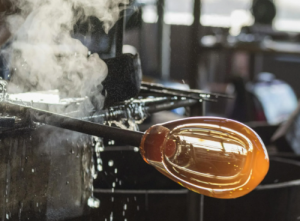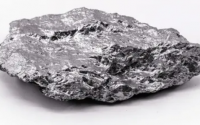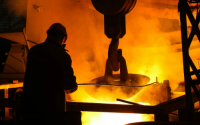Molybdenum Electrodes vs. Traditional Glass Melting
Introduction
The glass industry is always looking for ways to make glass in cleaner, more efficient, and cheaper ways. Recently, using molybdenum electrodes in electric furnaces has become a big deal. It’s a new method that’s quite different from the old ways of making glass using gas furnaces.

Let’s break down the differences between these two methods, their pros and cons, and what makes molybdenum electrodes stand out.
Old-School Glass Melting
Traditionally, making glass involved big gas-fired furnaces. These furnaces would burn natural gas or oil to melt the raw materials into glass. This method has been around for a long time and is pretty good at making a lot of glass.
Pros:
– Big Production: You can make a lot of glass at once.
– Versatile: Works with many types of glass.
– Tried and Tested: People have been using this method for ages.
Cons:
– Uses a Lot of Energy: It’s not the most energy-efficient and loses a lot of heat.
– Pollution: Burning gas or oil releases CO2 and other bad stuff into the air.
– Quality Issues: It can be hard to keep the heat even, which might affect the glass quality.
Molybdenum Electrodes Method
Using molybdenum electrodes in electric furnaces is a newer method. These furnaces heat the glass directly using electricity passing through molybdenum electrodes. It’s a neat way to do things differently.
Pros:
– Saves Energy: Direct heating means less energy waste.
– Cleaner: Fewer pollutants and greenhouse gases make this a friendlier option for the planet.
– Better Quality: The heat is more even, which means the glass comes out nicer.
– Less Upkeep: Molybdenum is tough and doesn’t wear out quickly, meaning less fuss over time.
Cons:
– Costs More Upfront: Setting up these electric furnaces can be pricier.
– Needs Lots of Power: You need access to plenty of electricity, which might not be possible everywhere.
– A Bit Complex: Getting everything up and running requires some know-how.
Related reading: Molybdenum Electrodes For Glass Furnaces
So, What’s Better?
– Eco-friendly: Molybdenum electrodes are the way to go if you’re looking to cut down on pollution and save energy.
– Quality Matters: If you want consistently good glass, the electric method wins.
– New Needs: For making special kinds of glass or small batches, electric furnaces are more flexible.
Wrapping Up
Choosing between molybdenum electrodes and traditional methods depends on what you care about most: Is it saving the planet, making the best glass, or keeping costs down? As the glass industry evolves, we might see more of these electric furnaces, especially as they become cheaper and we figure out more about using them effectively. But the old ways won’t disappear overnight, especially for making huge amounts of glass or in places where switching over is hard.
Table 1. Molybdenum Electrodes vs. Traditional Glass Melting
| Old-School | Molybdenum Electrodes | |
| Production Scale | High | – |
| Versatility | High | – |
| Experience | Established | Newer |
| Energy Efficiency | Lower | Higher |
| Environmental Impact | Higher pollution | Cleaner |
| Quality of Output | Variable | Better |
| Maintenance | – | Lower |
| Initial Cost | Lower | Higher |
| Complexity | Simpler | More complex |
Molybdenum electrodes undergo a precise manufacturing process to ensure they meet the high standards required for glass melting applications. Advanced Refractory Metals (ARM) offers a range of molybdenum electrodes, customizable to unique requirements, ensuring optimal performance in challenging environments. Send us an inquiry if you are interested.



